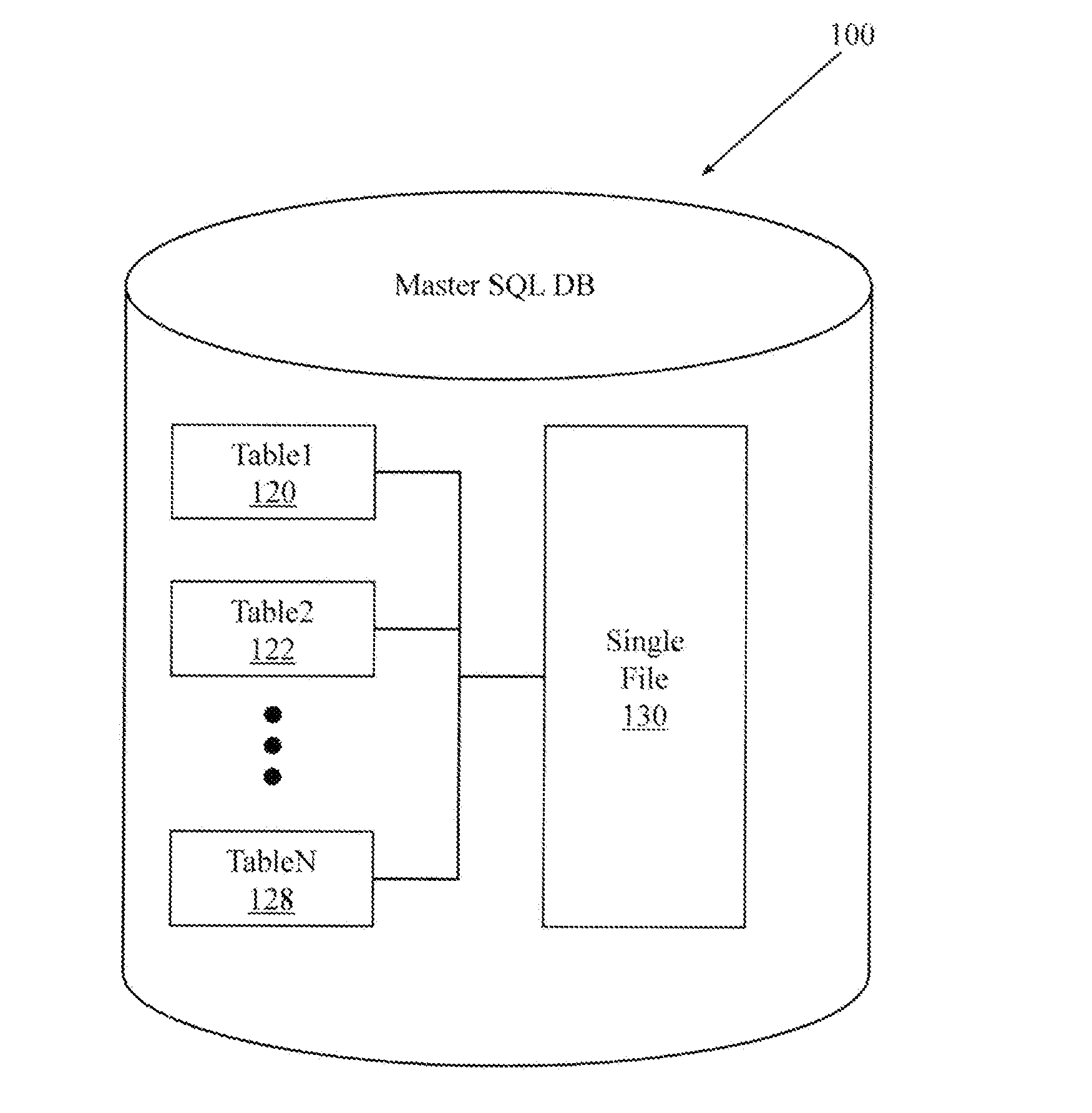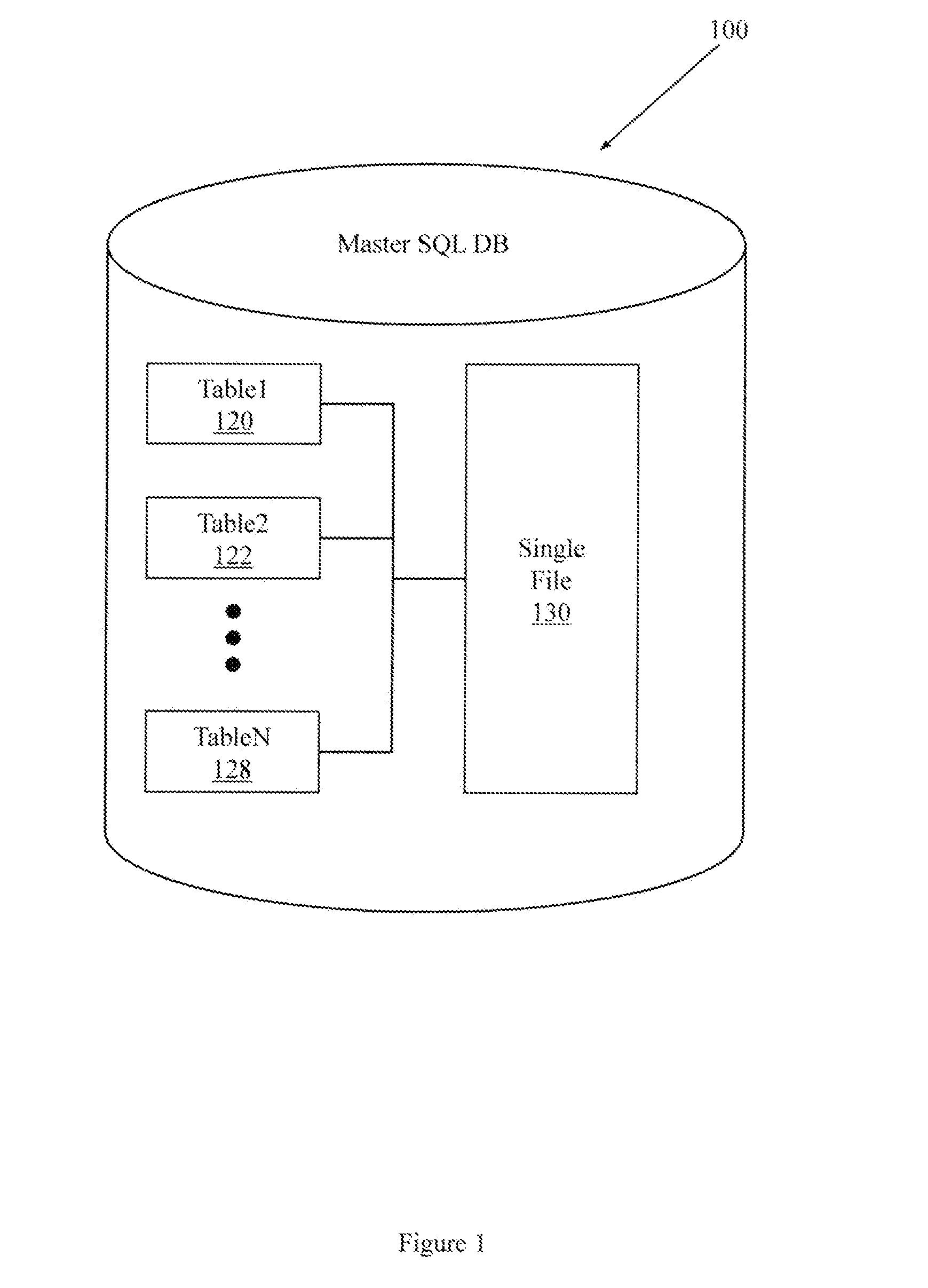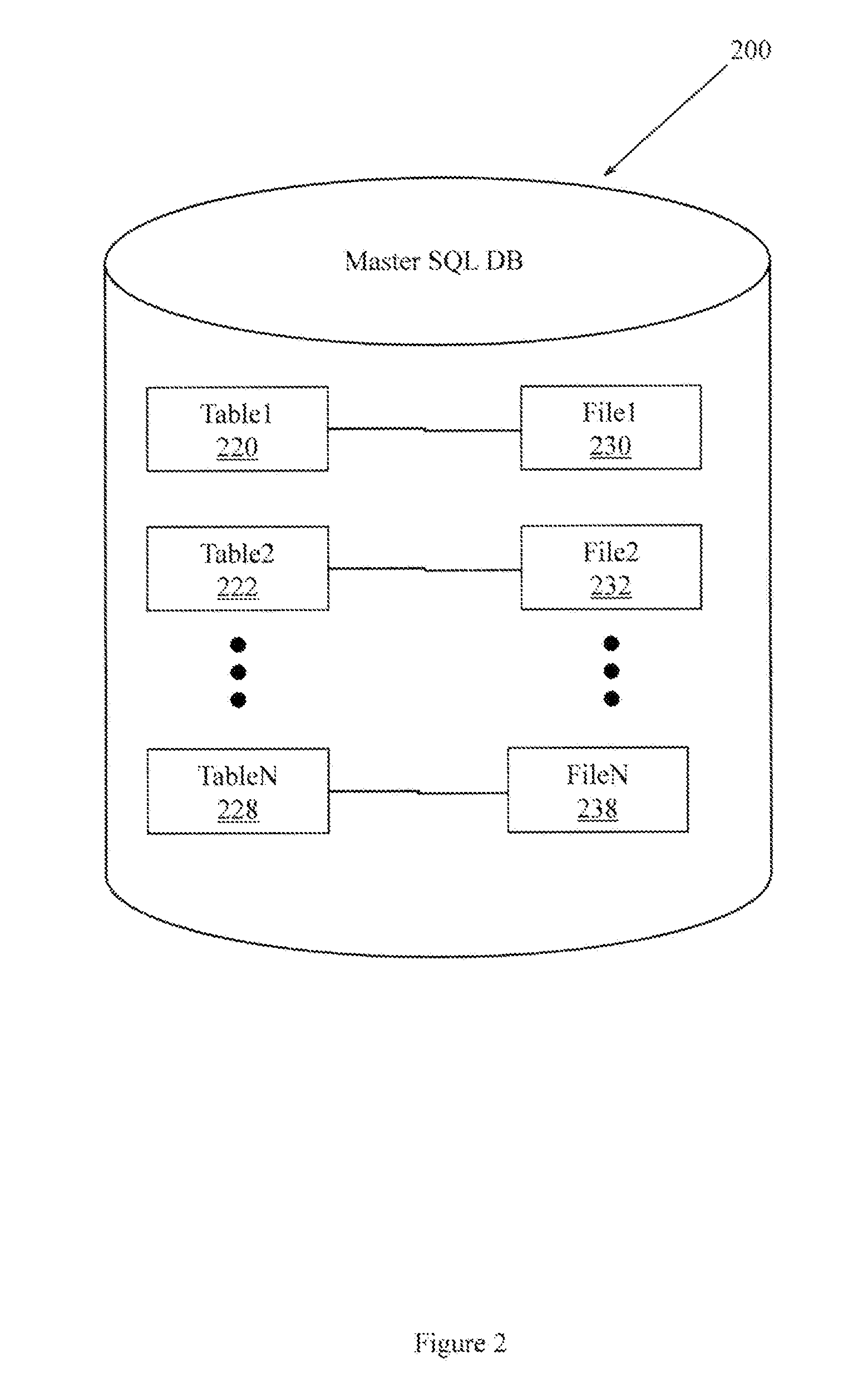Database Conversion From Single Monolithic File Mode To One Table Per File And One File Per Table Mode
a data base and file mode technology, applied in the field of data base conversion from single monolithic file mode to one table per file and one file per table mode, can solve the problems of inability to distribute data, waste of space, and extreme time-consuming to convert from one mode to another mod
- Summary
- Abstract
- Description
- Claims
- Application Information
AI Technical Summary
Benefits of technology
Problems solved by technology
Method used
Image
Examples
Embodiment Construction
[0016]Example methods and apparatus improve on conventional database conversion approaches by addressing issues associated with converting from a first mode for a database (e.g., single monolithic file mode) to a second mode for the database (e.g., one file per table, one table per file). An example approach for transitioning a master SQL database operating in single monolithic file mode (SMFM) to an SQL database operating in one table per file and one file per table mode (OTPFM) is provided. The example method could also operate in reverse to transition a master SQL database operating in OTPFM to SMFM. While an SQL database is discussed in some examples, more generally the example apparatus and methods apply to databases that operate with single monolithic file modes and one table per file modes.
[0017]One example approach includes starting a binary hot backup tool (e.g., mysqlbackup) for the master SQL database, instantiating a slave database for the master SQL database and populat...
PUM
 Login to View More
Login to View More Abstract
Description
Claims
Application Information
 Login to View More
Login to View More - R&D
- Intellectual Property
- Life Sciences
- Materials
- Tech Scout
- Unparalleled Data Quality
- Higher Quality Content
- 60% Fewer Hallucinations
Browse by: Latest US Patents, China's latest patents, Technical Efficacy Thesaurus, Application Domain, Technology Topic, Popular Technical Reports.
© 2025 PatSnap. All rights reserved.Legal|Privacy policy|Modern Slavery Act Transparency Statement|Sitemap|About US| Contact US: help@patsnap.com



